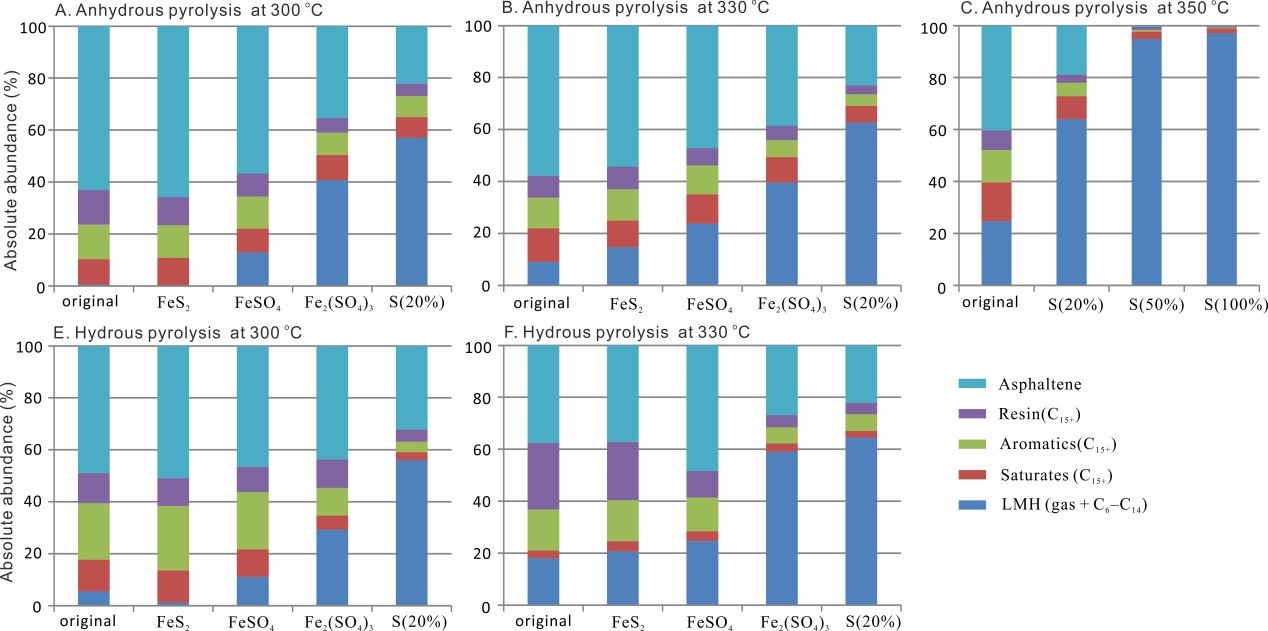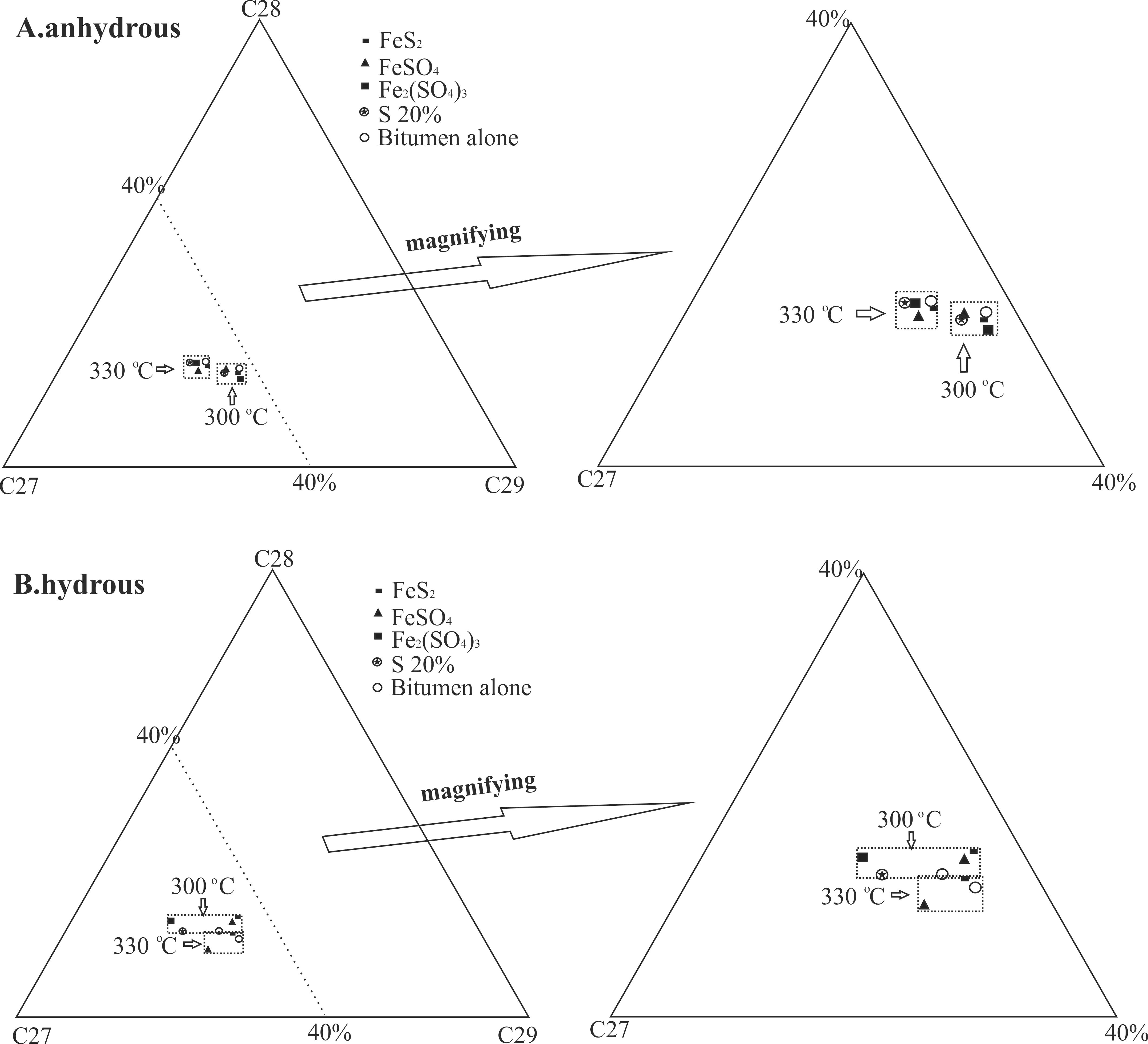The effect of sulfur compounds on the evolution of hydrocarbons and biomarkers in source rocks has been found by a Chinese team led by Professor Ansong Geng and his team members Dr. Liangliang Wu and Sir. Xinyan Fang. Sulfur and sulfur-bearing minerals widely occur in marine source rocks, due to the abundance of SO2- 4 in seawater. Although sulfur and sulfur-bearing minerals are minor constituents of most sediments, they may still significantly influence the thermal evolution of organic matter (OM) in sediments and petroleum reservoirs. For example, the reactions occurring between S0 (elemental sulfur) and OM may lead to sulfur incorporation, the formation of unsaturated organic compounds (e.g., aromatics) from alicyclic saturated hydrocarbons, and the degradation of biomarkers. The roles of sulfur and sulfur-bearing minerals in the generation and evolution of sedimentary organic matter (OM) have been of interest to organic geochemists for decades. However, most previous studies have focused on the pyrolysis behaviors of fossil fuels or single organic compounds in the presence of S-species. Few studies have looked at their effects on specific biomarkers persisted in crude oils and/or sedimentary organic matter due to stable structures. Biomarkers are widely used in oil studies to help evaluate thermal maturity assessments, organofacies studies, and oil-oil/oil-source rock correlations and the degrees of oil source mixings. Understanding the interacting effects of organic matter inputs, mineral composition, and thermal maturity on the evolution of biomarkers is important to most geochemical evaluations.
In their study, a bitumen with abundant biomarkers was pyrolyzed (under both hydrous and anhydrous conditions) with elemental sulfur and sulfur bearing minerals (including FeS2, FeSO4, and Fe2(SO4)3) at various temperatures. The absolute concentrations and the distributions of biomarkers in the above thermal altered bitumens were compared and discussed. The results show that effects of different forms of sulfur on the evolution of biomarkers vary. FeS2 (pyrite) almost does not influence the characteristic of biomarkers while SO2- 4 (FeSO4 and Fe2(SO4)3) and S0 have significantly effects on the characteristic of biomarkers during oil-generative windows under both hydrous and anhydrous conditions. Their extent of thermal alteration of biomarkers are decreased by the following order: S0 > Fe2(SO4)3 > FeSO4 > FeS2. Additionally, the presence of water seems to promote the influence of different forms of sulfur on the evolution of biomarkers but do not change their influence order. Meanwhile, the influence of elemental sulfur on biomarkers will also increase with the maturity and the relative abundance to TOC. It implies that the pyrolysis of bulk source rock powders is considered to be more reprehensive than the pyrolysis of kerogen, as the influence of mineral compositions (both clay minerals and sulfur-bearing minerals) can be considered. However, kerogen with the removal of sulfur compounds is more suitable for the study of the thermal maturation of OMs.
They only discussed the influence of different forms of sulfur on the thermal evolution of biomarkers in source rocks. Future studies on the influence of different forms of sulfur on the thermal evolution of biomarkers in petroleum reservoirs can help further knowledge of the role of sulfur in OMs. For petroleum reservoirs, gypsum serves as a dominant sulfur-bearing mineral and should be taken into account. Meanwhile, the transportation of sulfur-bearing minerals by migrated hydrocarbons from source rocks to reservoirs and relative levels of sulfur-bearing minerals found in reservoirs must also be considered.
The corresponding contribution has been published online in Organic Geochemistry on June 25th, 2018.
Relative link: https://www.sciencedirect.com/science/article/pii/S0146638018301396

Figure.1. The effect of S-compounds on the evolution of liquid hydrocarbons in source rocks at various conditions (300-350 oC,hydrous and anhydrous).

Figure.2. Sterane ternary diagram of C27–C29 ααα20R regular steranes in the pyrolysates with various additives at various temperatures.